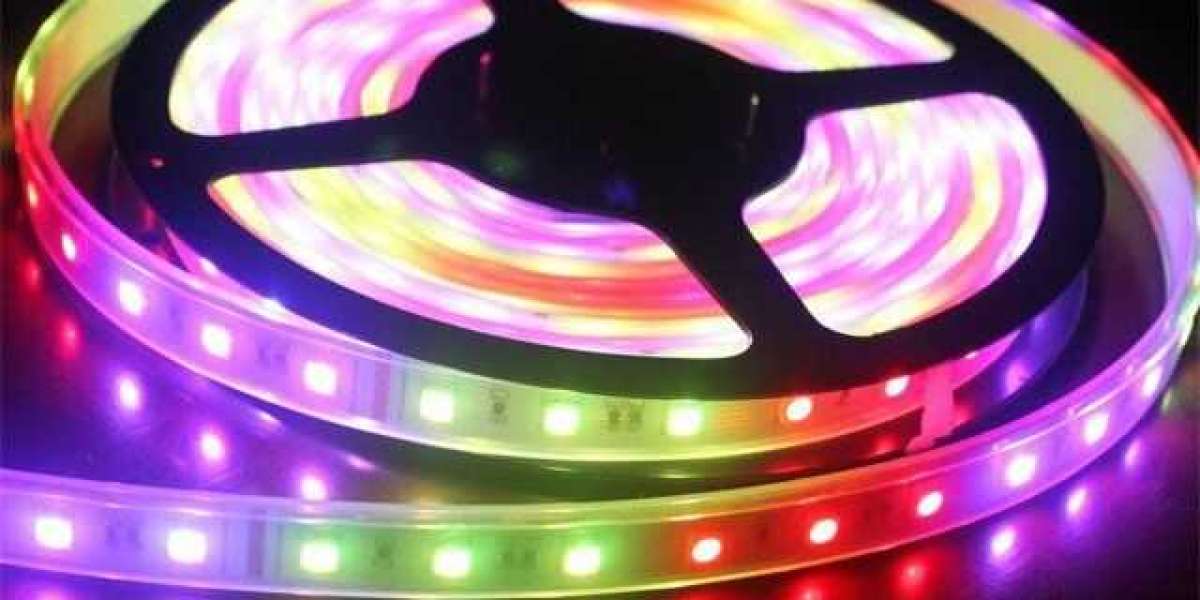Introduction
As LED lighting continues to revolutionize the way we illuminate our homes, businesses, and cities, one component often overlooked but critically important is the LED power supply. Also known as LED drivers, these devices are essential to ensure the safe and efficient operation of LED lights. Whether you're designing a lighting system for architectural use, upgrading commercial lighting, or diving into DIY LED projects, understanding LED power supplies is key to long-term performance and reliability LED Power Supply.
This article explores the importance, types, and considerations involved in choosing the right LED power supply for your needs.
What Is an LED Power Supply?
An LED power supply is an electrical device that provides and regulates power to LED lights. LEDs operate on low voltage and require a constant current or constant voltage to work efficiently and safely. Standard electrical outlets supply alternating current (AC) at high voltage (e.g., 120V or 240V), which is incompatible with the direct current (DC) at low voltage that LEDs need.
The power supply’s main job is to convert high-voltage AC power into low-voltage DC power and to regulate that power so that the LEDs operate within their specified parameters.
Why LED Power Supplies Matter
LEDs are sensitive to power fluctuations. Without a suitable power supply, the LEDs may flicker, overheat, or even burn out prematurely. The right power supply ensures:
Stable performance – Constant current or voltage is maintained to avoid fluctuations.
Efficiency – Minimizes energy loss during the power conversion process.
Longevity – Extends the lifespan of LED fixtures by protecting them from electrical stress.
Safety – Prevents short circuits, overvoltage, and overheating through built-in protective features.
Types of LED Power Supplies
LED power supplies are generally categorized into constant voltage and constant current types. The choice between the two depends on the LED configuration.
1. Constant Voltage (CV) Power Supply
Provides a fixed voltage, typically 12V or 24V DC.
Used for LED strips, signage, and other systems with built-in current control.
Ideal for situations where multiple LEDs are connected in parallel.
2. Constant Current (CC) Power Supply
Supplies a fixed current (e.g., 350mA, 700mA) while the voltage can vary.
Suitable for high-power LEDs or fixtures that require precise current control.
Common in industrial, commercial, and street lighting applications.
Key Features to Consider
When selecting an LED power supply, several factors need to be evaluated to ensure compatibility, safety, and efficiency.
1. Wattage Rating
Ensure the power supply provides enough wattage for all connected LEDs. Add a safety margin of about 20-30% to the total wattage of your LED load to prevent overloading.
2. Voltage and Current Matching
Always match the power supply’s output voltage and current rating to the LED requirements. Mismatches can lead to malfunction or damage.
3. Dimming Capabilities
Some LED drivers support dimming through TRIAC, 0-10V, or PWM methods. Choose a compatible driver if dimming is required.
4. IP Rating
For outdoor or wet environments, select power supplies with a higher IP (Ingress Protection) rating, such as IP65 or above.
5. Certifications and Standards
Look for UL, CE, or RoHS certifications that ensure safety, quality, and environmental compliance.
6. Efficiency Rating
Higher efficiency (e.g., 90% or more) means less energy wasted as heat, contributing to better energy savings.
Applications of LED Power Supplies
LED power supplies are used in a wide range of applications:
Architectural Lighting – Accentuates structures and enhances ambiance with dynamic lighting.
Commercial Spaces – Provides bright, consistent lighting for retail and office environments.
Street and Industrial Lighting – Offers durability and energy efficiency for large-scale lighting projects.
Signage and Displays – Powers LED signs, scoreboards, and billboards.
Residential Use – Supports home installations such as under-cabinet lighting, garden lights, and accent features.
Installation and Safety Tips
Read Specifications Carefully – Always refer to the manufacturer’s datasheet before installation.
Avoid Overloading – Never connect more LEDs than the driver’s rated capacity.
Proper Ventilation – Ensure that the power supply has adequate airflow to prevent overheating.
Waterproofing – Use waterproof enclosures or IP-rated supplies in outdoor applications.
Grounding and Wiring – Follow local electrical codes and use appropriate wire sizes.
Common Mistakes to Avoid
Mixing Voltage and Current Types – Using a constant current driver for a constant voltage application (or vice versa) can lead to failure.
Ignoring Temperature Limits – Heat affects performance; always consider the operating temperature range.
Incorrect Load Matching – Undermatching or overmatching the load can reduce efficiency or damage components.
Trends and Innovations
With the rise of smart homes and the Internet of Things (IoT), LED power supplies are becoming more intelligent and versatile:
Smart Dimming and Control – Integration with apps and voice assistants.
Energy Monitoring – Real-time tracking of energy use.
Compact Designs – Smaller form factors with higher output.
Solar-Compatible Drivers – For off-grid and energy-efficient solutions.
Conclusion
The LED power supply is the silent workhorse behind every efficient and long-lasting LED lighting system. Choosing the right power supply ensures that your lighting performs at its best, lasts longer, and consumes less energy. Whether you’re installing a few LED strips at home or setting up a large commercial lighting system, understanding how LED power supplies work—and selecting the right one—is critical to success.
With proper planning and quality components, you can achieve a lighting solution that’s not just visually appealing but also energy-smart and cost-effective.








